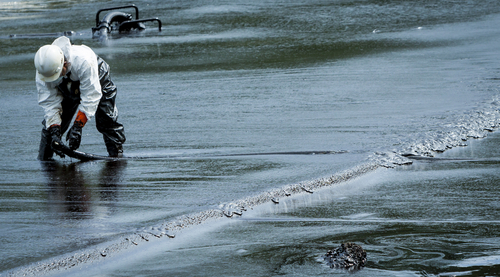 |
The catastrophic oil spill occurred in a wetland near Marshall in South-Central Michigan at 5:58 p.m. on July 25, 2010, but it was not discovered for more than 17 hours. During the time between the pipeline rupture and the discovery, two startups occurred on the pipeline resulting in two pumping events that together represented 81 percent of the total 843,444 gallons of crude oiled spilled. The oil inundated the wetland, then flowed into Talmadge Creek and ultimately entered the Kalamazoo River, which flows into Lake Michigan.
In a recent Federal Register Notice (FR Volume 79, Number 18), the Department of Transportation’s (DOT) PHMSA examined each step in the oil spill debacle that played a role in the extent of the spill, all of which “were caused by pervasive organizational failures at (the company) …” In the ensuing investigation by the National Transportation Safety Board (NTSB), these failures were identified as:
- Deficient integrity management procedures that allowed previously documented crack defects in corroded areas of the pipeline to propagate until the pipeline failed,
- Inadequate training of control center personnel that resulted in a failure to recognize the rupture for more than 17 hours during which time two pipeline restarts took place, and
- Insufficient public awareness and educational information that allowed the release to continue almost 14 hours after the first notification of an odor was made to local emergency response agencies.
Forget expensive calls to lawyers and consultants. With Enviro.BLR.com, you get instant access, 24/7. Try it out today and get the 2014 EHS Salary Guide, absolutely free. Download Now.
The PHMSA Facility Response Plan (FRP) for onshore oil pipeline operators required under 49 CFR 194.121 and Appendix A also was found to be lacking in several essential areas, ultimately contributing to the severity of the spill including:
- Failure to identify and ensure the availability of adequately trained emergency responders that have sufficient response resources,
- Failure to provide regulatory guidance for pipeline facility response planning, and
- Limited oversight of pipeline emergency preparedness.
Regarding the lack of available response resources, the Notice cites two specific sections of Part 194 that lay the groundwork for owners and operators of onshore oil pipeline systems to ensure a worst-case scenario is defined in advance and that timely, effective, and appropriate personnel are contracted and available.
Section 194.115(a) requires that owners and operators “shall identify and ensure by contract or
other approved means, the resources necessary to remove, to the maximum extent practicable, a worst- case discharge and to mitigate or prevent a substantial threat of a worst case discharge.”
Section 194.115(b) goes on to state that “an operator shall identify in the response plan the
response resources which are available to respond within the time specified, after discovery of a worst case discharge, or to mitigate the substantial threat of such a discharge.”
Everything You Need for Environmental Compliance
Enviro.BLR.com puts everything you need at your fingertips, including practical RCRA, CAA, CWA, hazardous waste regulatory analysis and activity, news, and compliance tools. Try it at no cost or risk and get a FREE report.
Since each site is different, these sections do not mandate or define the exact amount of resources required for a worst-case scenario, rather Part 194 Appendix A recommends using the U.S. Coast Guard’s (USCG) regulations and Planning Volume Worksheet pertaining to FRPs. The NTSB found the company not only “misinterpreted and miscalculated” the amount of resources needed, but there was also no indication the company utilized the USCG regulations in its FRP.
In addition, responders did not have the resources identified in the FRP on hand and it took more than 10 hours for the resources to arrive and be deployed. According to PHMSA, this holdup could have been minimized or eliminated by using a USCG-classified oil-spill response organization (OSRO) as defined in 33 CFR part 154, Appendix C. According to PHMSA, using a USCG-classified OSRO not only can reduce the equipment information required in an FRP, it also allows PHMSA to confirm response capability resources. The responsibility for a timely response, however, remains with the owner/operator as defined in Section 194.115(b).
